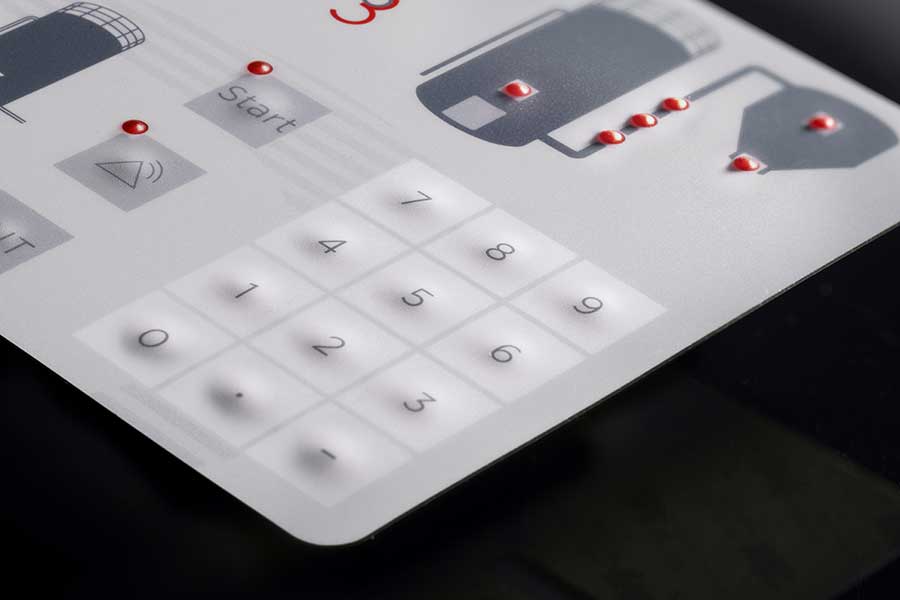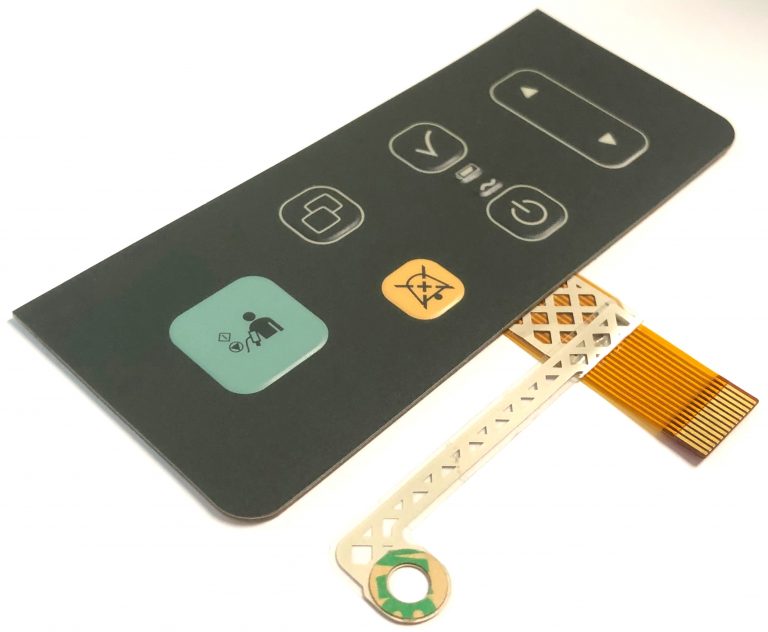Many designers prefer working with a proven membrane switch manufacturer for custom interfaces.
Many designers prefer working with a proven membrane switch manufacturer for custom interfaces.
Blog Article
Everything About Membrane Switch: Understanding Its Layout and Performance
When you assume regarding the control interfaces in modern-day gadgets, membrane switches typically come to mind. Allow's explore what collections membrane switches over apart from various other control systems.
What Are Membrane Layer Switches?

Their smooth nature makes them very easy to clean and resistant to dust and moisture, an important attribute in many atmospheres. Membrane switches can additionally be customized relating to form, dimension, and graphics, allowing makers to develop one-of-a-kind interfaces tailored to certain items. And also, they're lightweight and thin, which aids in minimizing the total bulk of tools. Generally, membrane layer buttons play a considerable duty in enhancing user experience across a large array of applications.
Exactly How Membrane Switches Over Work
When you press a key on a membrane button, it turns on an uncomplicated yet effective mechanism. The leading layer, frequently made from versatile product, pushes down onto a conductive layer underneath it. This activity bridges the space in between conductive traces, completing an electric circuit. As quickly as the circuit closes, it sends a signal to the device's controller, which translates your input.
You'll observe that the responsive feedback differs based on the button layout, providing either a soft click or a much more pronounced response. Once you launch the key, the membrane layer returns to its initial placement, resuming the circuit and quiting the signal. This process takes place practically immediately, making sure a receptive user experience.
Membrane switches are preferred as a result of their resilience and resistance to dirt and dampness, making them ideal for various applications, from home home appliances to medical devices. Comprehending this operation assists you value their widespread use.
Key Parts of Membrane Switches
Recognizing the key components of membrane layer switches is basic for grasping their performance and style. The protective layer shields versus ecological factors and put on, prolonging the switch's life expectancy. By understanding these components, you'll gain insight into exactly how membrane switches over operate and their significance in different applications.
Materials Utilized in Membrane Layer Switch Layout
The performance and sturdiness of membrane layer switches heavily rely on the materials made use of in their layout. You typically experience polyester and polycarbonate as primary substratums due to their exceptional stamina and versatility. These materials resist scratches and chemicals, making them ideal for demanding atmospheres.
The conductive layers usually utilize silver or carbon, picked for their integrity and conductivity. membrane switch manufacturer. Silver provides premium efficiency, while carbon is an affordable choice. For the overlay, you could think about a matte or glossy surface, relying on your aesthetic requirements and customer experience
Adhesives play a crucial function too; they bond layers safely and guarantee longevity. Make specific to select adhesives that withstand environmental variables like temperature level and moisture. Don't ignore the significance of an excellent printing method for graphics, as it boosts both performance and aesthetic charm. Selecting the appropriate materials will ensure your membrane layer switch stands the examination of time.
Design Considerations for Membrane Layer Switches
While making membrane layer switches, it's vital to consider various factors that influence their performance and individual experience. Begin by concentrating on the format and switch size; ensure they're instinctive and very easy to browse. Take into consideration the responsive comments you desire to supply-- will users require a visible click or a softer touch? Furthermore, think of the materials you'll utilize, as they'll impact sturdiness and aesthetics.
Validate your style fits ecological factors, like dampness or temperature level variations, which can impact efficiency. By thoroughly considering these components, you'll produce a membrane switch that boosts use and fulfillment.
Applications of Membrane Layer Buttons
Membrane layer switches are flexible components located in various applications, from industrial devices to consumer electronic devices. Learn More You'll see their effect in makers that call for sturdy interfaces and in gadgets that benefit from sleek designs. Understanding these applications aids you appreciate the functionality and functionality of membrane switches in everyday technology.
Industrial Devices Usage
When you're aiming to improve the capability of commercial tools, membrane layer switches supply a reputable solution that integrates sturdiness with straightforward style. These switches are best for severe settings, giving resistance to dust, moisture, and chemicals. You'll locate them in control panels for manufacturing equipments, a/c systems, and clinical gadgets, where accuracy and responsiveness are vital. Their low account implies they fit seamlessly right into numerous devices, saving important space while maintaining simplicity of usage. With adjustable graphics and backlighting alternatives, you can produce an user-friendly interface for operators, improving effectiveness and safety and security. And also, their lengthy lifespan decreases maintenance prices, making them a smart financial investment for your industrial applications. Embrace membrane layer buttons to streamline your procedures and boost total performance.
Customer Electronics Integration
In the domain name of consumer electronic devices, membrane layer switches play an important duty in enhancing user communication and gadget capability. You'll locate them in gadgets like microwaves, push-button controls, and video gaming consoles, offering a seamless means to interact with innovation. Their streamlined style enables for easy assimilation into numerous items, making controls user-friendly and straightforward. With their capability to incorporate graphics and backlighting, you can delight in a modern-day visual that complements the tool's overall look. Membrane buttons likewise ensure sturdiness and resistance to dust and moisture, extending the life expectancy of your electronics. By selecting membrane buttons, you improve not simply the performance but also the design of your tools, making daily communications smooth and satisfying.
Advantages and Disadvantages of Membrane Switches
While membrane layer switches offer a series of benefits, they also include some disadvantages that you must consider. One significant advantage is their explanation portable style, making them ideal for space-constrained applications. They're also affordable, giving a durable service with a reduced manufacturing price. Additionally, their seamless surface area is simple to clean, enhancing health in environments like medical facilities.

Membrane layer switches can have a much shorter life expectancy compared to mechanical buttons, especially under heavy use. They can likewise be much less tactile, which could influence customer comments throughout operation. Stabilizing these pros and disadvantages will certainly help you establish if membrane layer switches are the ideal fit for your project.
Often Asked Questions
The Length Of Time Do Membrane Layer Switches Typically Last?
Membrane layer switches over typically last between 5 to 10 years, depending upon use and ecological conditions. You'll intend to assess variables like wear, direct exposure to wetness, and temperature level changes to assess their long life properly.
Can Membrane Switches Over Be Customized for Particular Layouts?
Yes, you can customize membrane layer buttons to fit details designs (membrane switch manufacturer). You'll have the freedom to choose shades, forms, and layouts that match your job's needs, ensuring they blend perfectly with your overall aesthetic
What Is the Expense Array for Membrane Switch Manufacturing?
The price array for membrane button manufacturing typically drops in between $1 and $10 per device, relying on elements like style intricacy, amount, and materials. You can get quotes from producers to discover the ideal alternative.

Are Membrane Switches Over Water-proof or Resistant?
Membrane buttons can be created to be water-proof or immune, relying on materials used and building and construction methods. If you require them for wet environments, ensure you define those needs during the design procedure.
How Do Membrane Switches Compare to Traditional Switches?
Membrane layer switches are generally thinner and more versatile than standard switches, providing a streamlined layout. They're often less complicated to clean up Source and incorporate, yet may not supply the responsive comments you're used to with mechanical options.
Conclusion

Report this page